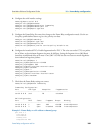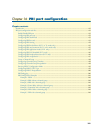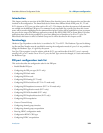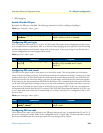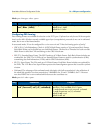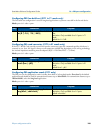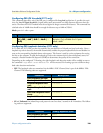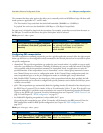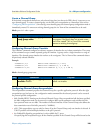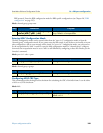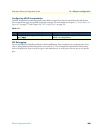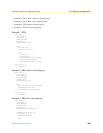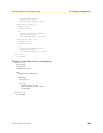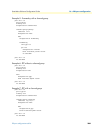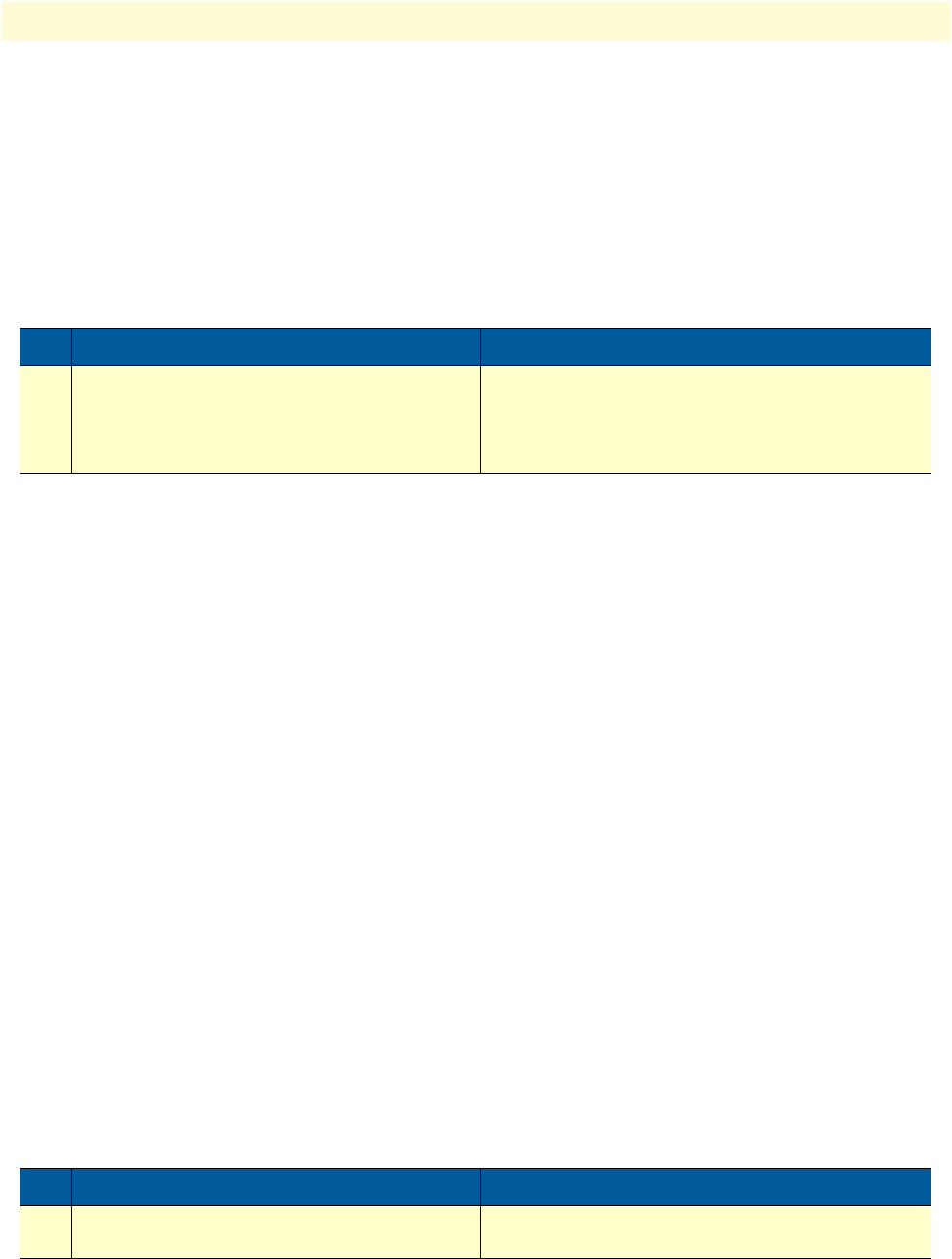
PRI port configuration task list 197
SmartWare Software Configuration Guide 16 • PRI port configuration
The command has three other options that allow you to manually switch on/off different loops. All these addi-
tional options are applicable in T1 and E1 mode.
The ‘line-interface’ loop sends back the whole link bandwidth (2048kBit/s or 1544kBit/s).
In ‘payload’ the entire user data bandwidth (1984 kbps or 1536 kbps) is looped back.
For some tests it is helpful to loop back the system data. For example, system data are sent from the router to
the PRI port. To switch on this feature the option ‘back-plane’ must be selected.
Mode: port e1t1 <slot> <port>
Configuring PRI encapsulation
The PRI encapsulation command prepares the port for a specific application protocol. After the right encapsu-
lation type has been set, the configuration mode command for the selected protocol can be executed for proto-
col specific configuration.
• channelized: This special encapsulation type pushes the port in mode where it is possible to setup an appli-
cation for a user defined set of timeslots. Normally, all timeslots of a port are under full control of the appli-
cation specified with the encapsulation command. In ‘channelized’ mode, an application uses only the
specified timeslots. If the encapsulation is set to ‘channelized’, use the channel-group command to create a
new Channel Group an to enter its configuration mode. In the Channel Group configuration mode, the
same encapsulation types as on the port configuration mode are available again, except channelized.
• hdlc: Enables HDLC Framing on the selected port. After encapsulation hdlc has been specified, the hdlc
configuration mode can be entered to configure hdlc specific parameters and to define the link layer proto-
col must run over hdlc.
• q921: This encapsulation type automatically binds the signaling timeslot (D-channel) of the selected port to
the ISDN Layer 2 protocol. This is timeslot 16 for an E1 and timeslot 24 for a T1 port. If in the q921 con-
figuration mode q931 is specified as next encapsulation, the control of all remaining timeslots (B-channels)
is given to the ISDN Layer 3 protocol. For more information please see Chapter18, “ISDN Overview” on
page 212 and Chapter19, “ISDN configuration” on page 217.
• rbs: Robbed Bit Signaling encapsulation is only available for T1 ports.
On specifying this encapsulation type, all the 24 timeslots will be bound to the RBS protocol. Enter the
RBS configuration mode for RBS specific configuration (see Chapter 20, “RBS configuration” on
page 225).
Mode: port <hw-type> <slot> <port>
Step Command Purpose
1
[ name] (prt-e1t1)[slot/port]#[no] loop-back
{line-interface | back-plane | payload | auto-
detection}
Enables/Disables type of data loopback, line-inter-
face, payload, back-plane, or auto-detection.
Restriction: Only available for e1t1 ports
Default: disabled
Step Command Purpose
1 [name] (prt-e1t1)[slot/port]#[no] encapsu-
lation {channelized | hdlc | q921 | rbs}
Specifies the encapsulation type of the PRI port.
Default: no encapsulation



